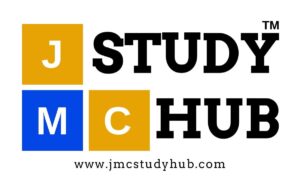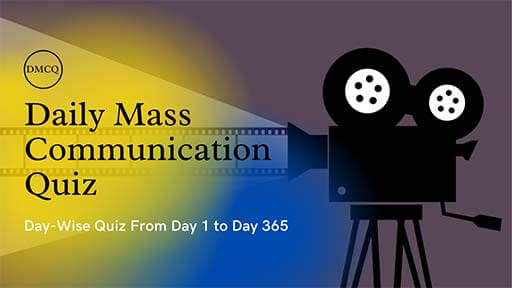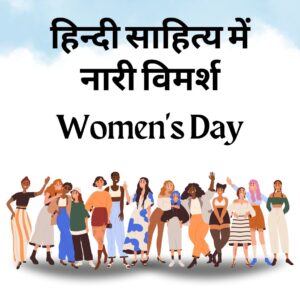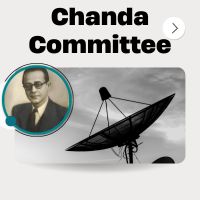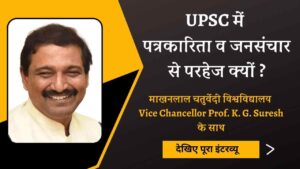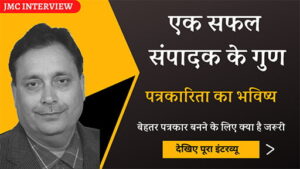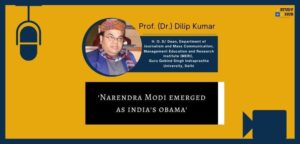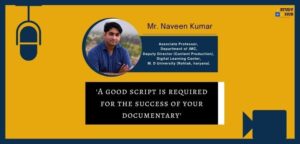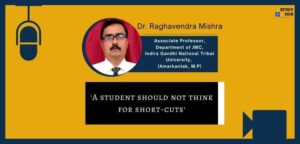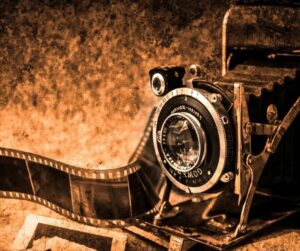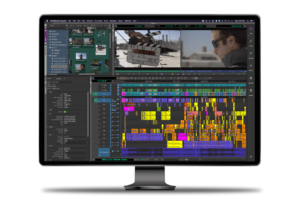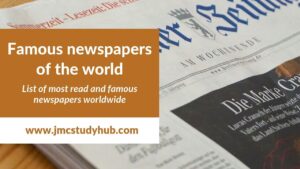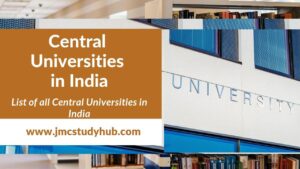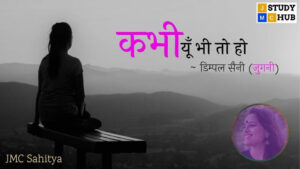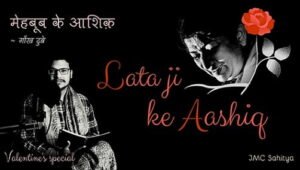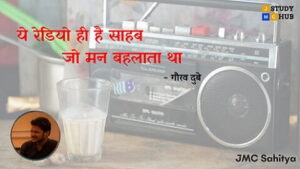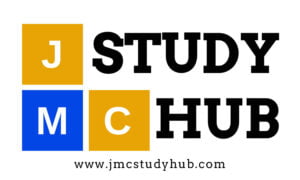Daily Mass Communication Quiz (DMCQ) boost your concepts through day wise solved quiz from the entire course of Journalism and Mass communication (JMC) with detail explanations.
Journalism and Mass Communication Objective Questions (DMCQ)
Q 1. Haptics relates to
(A) Body movements
(B) Touch
(C) Paranormal language
(D) Eye Movement
Correct Answer: (B) Touch
Explanation: “haptic” means anything relating to the sense of touch.
Q 2. What can be an example of didactic reportage?
(A) Anti tobacco campaign
(B) Propaganda on demonetisation
(C) Both of these
(D) None of these
Correct Answer: (C) Both of these
Explanation: Didactic reportage refers to news reporting that has a moral or educational purpose, usually meant to convey a social message or to raise awareness about a particular issue. Anti-tobacco campaigns often use didactic reportage to educate the public about the health risks associated with smoking and to encourage them to quit or avoid smoking.Propaganda on demonetization that aims to educate the public about the benefits of demonetization and discourage the use of black money would also be considered didactic reportage, as it has a moral or educational purpose.
Q 3. A hole through which light travels is called
(A) Tripod
(B) Console
(C) Aperture
(D) All of these
Correct Answer: (C) Aperture
Explanation: An aperture is a hole or an opening through which light travels.
Q 4. Who coined the term ‘Mimesis?
(A) Herbert Marcuse
(B) Cicero
(C) Aristotle
(D) Plato
Correct Answer: (D) Plato
Explanation: Mimesis is a Greek term that means imitation. Plato divides imitation by medium (words, paint, marble, etc.). He further divides the verbal techniques of imitation into pure imitation or mimesis, in which an actor impersonates a character on stage, and diegesis, or narration, in which a narrator speaks in the third person about events.
Q 5. XML stands for?
(A) Extensible Markup Language
(B) Extensible Mobile Lexicon
(C) X-Mas Markup Language
(D) All of these
Correct Answer: (A) Extensible Markup Language
Explanation: Extensible Markup Language, commonly known as XML, is a markup language that is used to encode and store data in a human-readable format. It was developed in the late 1990s as a standard for exchanging data over the internet, and it has become widely used in web applications, document management systems, and other information technology fields.
Q 6. Which of the following is body that represents newspapers publishers?
(A) ABC
(B) INS
(C) RNI
(D) IFWJ
Correct Answer: (B) INS
Explanation: The Indian Newspaper Society (INS) (formerly Indian and Eastern Newspaper Society) acts as the central organization of the Press of India, an independent body authenticating circulation figures of newspapers and periodicals in India. It plays a major role in protecting and promoting freedom of the press in India.
Q 7. Who among the following was not a chief editor of Malayala Manorama?
(A) Kandathil Varghese Mappilai
(B) Mamman Mappilai
(C) K M George
(D) K M Mathew
Correct Answer: (C) K M George
Explanation: Kandathil Varghese Mappillai was an Indian journalist, translator and publisher who was the founder of the newspaper Malayala Manorama and the magazine Bhashaposhini. Kandathil Cheriyan Mammen Mappillai and Kandathil Mammen Mathew were newspaper editor who served as the editor-in-chief of the Malayalam-language daily, Malayala Manorama.
Dr. K. M. George, was an eminent Malayalam writer and educator.
Q 8. Who is generally described as the unsung hero of a newspaper?
(A) Reporter
(B) Sub editor
(C) News editor
(D) Chief editor
Correct Answer: (B) Sub editor
Explanation: Sub-editors, also known as Copy Editors, are the unsung heroes of journalism. They work long hours, often through the night. Theirs’ is a hard and thankless job. Like the sub-editor makes a rough dummy to decide which story will be placed where. After this, the sub-editor moves the edited news reports in their respective slots.
Q 9. Ramnath Goenka is associated with ….
(A) The Indian Express
(B) The Hindustan Times
(C) The Times of India
(D) The Deccan Herald
Correct Answer: (A) The Indian Express
Explanation: Ramnath Goenka was an Indian newspaper publisher. He launched The Indian Express in 1932 and created the Indian Express Group with various English and regional language publications.
Q 10. Who among the following was a noted cartoonist?
(A) Bal Thackeray
(B) Jug Suraiyya
(C) TJS George
(D) Pothan Joseph
Correct Answer: (A) Bal Thackeray
Explanation: Shiv Sena founder Thackeray began his career as a cartoonist in the Free Press Journal in Bombay. His cartoons were also published in the Sunday edition of The Times of India.
